Home theaters have come a long way since the term “home theater” was first coined in the mid-1970s.
In its early days, a home theater was a dedicated room in someone’s home, typically in the basement. Front projection units made by Barco, Sony, NEC and other manufacturers were extremely popular. These behemoth electronic units, some weighing in at close to 200 pounds, would be hung from a ceiling, projecting an image anywhere from 100 inches all the way up to 250 inches. Price tags in excess of $10,000 were the norm. High quality screens were mounted in the ceiling, and with the flip of a switch, would lower to receive the projected image.
Other components such as an AV receiver, a pre-amp, high power amplifiers, laser disc players, VCRs and high-end audio speakers were required for movie theater quality sound. Dolby Digital 5.1 sound systems were popular “back in the day,” with front, center, rear and subwoofers all necessary gear. But constant tweaking by the homeowner or a trained professional was required to align the red, blue and green CRT tubes for a razor-sharp image. BNC cables were the norm, as HDMI cables had yet to be invented.
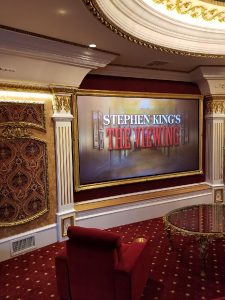
Fast forward to the edge of dawn for the millennium’s third decade. The quality of ultra high definition big screen televisions and surround sound for in-home enjoyment has vastly improved. VCRs and disc players have given way to streaming by such entities as Amazon Prime, Roku and Apple. Even Blu-ray, considered state-of-the-art only a few years ago, may be phased out. Audio, when handled by a skilled technician, is flawless. And LED lighting can create fantastic effects, all of this controlled by a hand-held device. Homeowners willing to shell out considerable cash to bring it all together actually are in a theater – one of their own.
Bob Finch, president and owner of Custom House in East Haddam, customizes the entertainment experience for homeowners in Connecticut and elsewhere, with some of his home theaters costing upwards of a quarter of a million dollars.
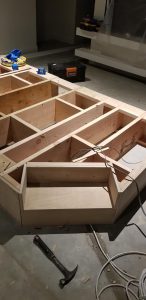
“Sometimes what I create in a home theater is a statement for the homeowner. Other times, it is done for someone who just really enjoys a quality home theater with the best of everything, including the television, sound, lighting, seating and whatever else they want included in the space. I usually get handed a set of keys and design the room for them.”
Finch, who works alongside his son, Benjamin, says they have designed everything from woodwork to lighting, and built more than 450 home theaters costing a quarter of a million dollars and more.
According to Finch, home theaters are “trending up” at present. “We saw things drop off in 2008, rebound some in 2014, and go into a lull prior to this year. But people have more disposable income now, and they want to spend it.”
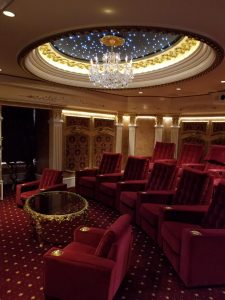
He installed a system for Southbury’s Gary Wronker that the homeowner enjoys pretty much every night of the week.
“I love movies and am addicted to television,” says Wronker. “I always liked things big. Bob installed a 133-inch projector screen in our living room that has now become also our theater room. Because we have a condo and limited space, we had all the speakers hidden. And the screen is also recessed and encased in a special housing that can be lowered to view movies and streamed television.” The speakers are located throughout the home, for enjoyment of music as well.
Finch even installed a small television screen behind the Wronkers’ bathroom mirror that, with a press of a button, comes to life. The television is not seen when turned off, and the mirror is, well, a mirror.
Bob Serio, owner of Perfect Vision and Sound in Avon, is another wizard who makes auditory and visual dreams come true. He has also created home theaters for well-heeled clients throughout the state, especially in the greater Hartford area. “There is no doubt that movie nights have become popular again for some people. It’s a time to gather the family around after a hectic day or week, pop some popcorn, get your pajamas on, stream a movie and relax.”
Serio says one of the key elements of a home theater is, of course, its sound – not only in the room itself but preventing it from reverberating through the remainder of the home. “You have to have the proper insulation, maybe spray foam or lead-lined Sheetrock, that will help insulate the theater and keep the sound in the room.”
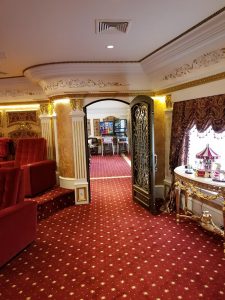
Serio just completed a super sports room theater for a client that cost upwards of $100,000. “We actually took the top of the garage off, created a home theater space, and put in the best of everything: flat screens, stadium seating, carpeting, nice woodwork, and a bar. There’s a 110-inch screen flanked by a 55-inch curved screen, another 55-inch screen over the bar, and 18 speakers in all.” And everything is remotely controlled, including automated window shades and light dimmers.
“To me, synergy is most important when it comes to home theaters, where one plus one is three. You want a certain television with a certain speaker to get the perfect balance of visual and audio.”
Serio’s company does about 12 installations a week. “In this area, we have a lot of different types of homes. Some are from the 1700s and the 1800s, and others are new. You have to work with the construction of the home when you design a theater, and it has to fit.”
Mark Grossi of Torrington’s SoundWorks & Security believes the home theater market is being fueled by changes in society. “People are working more, the kids are [involved in] so many things, and they only have so much time to relax and enjoy their home. I don’t see as many man caves as I once did. It’s more of a family thing.”
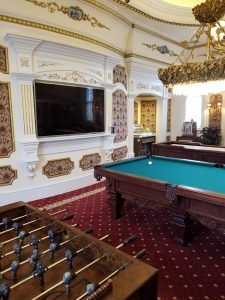
Carl Mazzotta, owner of Eastern Video Service in East Hartford, calls his customers “cord cutters” – homeowners who are getting rid of cable and satellite feeds, and streaming their content. “Disney is even rolling out an inventory of movies that can be accessed for a flat fee,” he says.
He listens to what the customer wants when designing and installing a home theater. “It’s a great screen, high-end surround sound audio, hidden wireless speakers, seating, and recessed lighting.”
Gary Rounseville of Glastonbury is a movie buff. He’s been that way for a long time. At the age of 70, he revels in his home theater, replete with a massive 13-foot-long, seven-foot high screen that comes alive thanks to a projector system Mazzotta installed for him and his family.
“I used to go to the movies a lot and now I stay home and stream them, taping many and watching them later,” says Rounseville. “I began with big screen television and always wanted the biggest screen I could get. Carl put in a 4K projector for me to upgrade the quality from a 1080p, which I had for years. We turned what was basically a family room into a television room with a bank of couches on one wall, far enough from the screen so that it was a pleasant viewing experience. I would say we use it five nights a week and I can now even watch old black and white movies so much more enjoyably than back in the old days.”
While many clients choose all the bells and whistles and money is no object, a “home theater” in a family room or a modest dedicated space in a basement is within the reach of most homeowners. A very good audio-visual system can be had for $10,000 to $20,000. What you do with the rest of the room is up to you and your wallet.
Movie nights are seemingly back in vogue and these days, there is no need to get in the car and drive to a brick and mortar theater. You can have it all right in the comfort of your own home.
John Torsiello is a writer and editor living in Torrington. He enjoys writing about and watching sports, especially golf, and is hoping to find a 13-foot screen under (or alongside) the Christmas tree.
Photography courtesy of Bob Finch



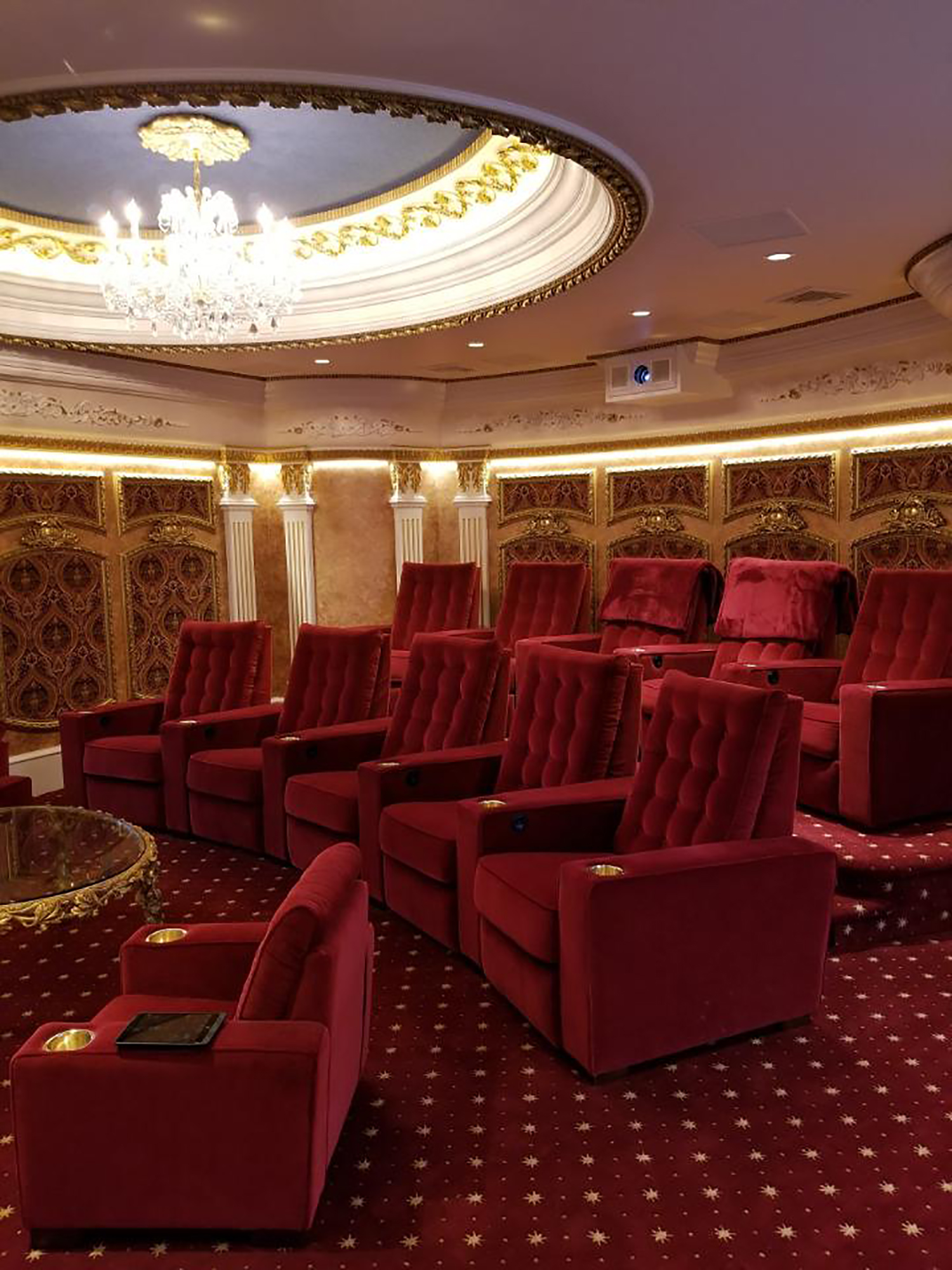




More Stories
Exploring the Shift in Parental Support During Adolescence
Fall in New England
At Home with Kerri-Lee Mayland